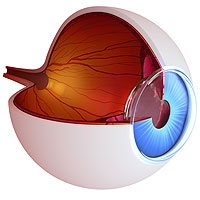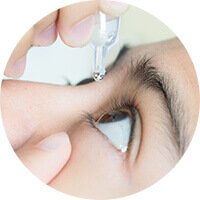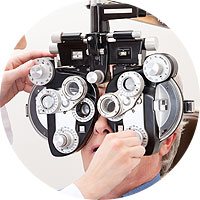
Cataract surgery is an exciting event in your life. If your eye doctor recommends you have it, that means cataracts are impacting your daily life.
Getting cataract surgery is exciting because it will give you your eyesight back! It is likely difficult to see when it’s time for cataracts to come out, and cataract surgery will be a relief.
No matter what type of lens you choose for cataract surgery, your eyesight will improve. But there is a wide range of lenses to choose from, and they all have different capabilities.
Keep reading to learn more about cataract surgery and if a lifestyle lens is right for you!
What Happens During Cataract Surgery?
Cataracts grow in the natural lens in your eye. They cause the lens to get cloudy over time until light can no longer pass through it.
When this happens, it’s time for cataract surgery. Cataract surgery removes and replaces your natural lenses with intraocular lenses or IOLs.
An IOL performs the same function as your natural lens, but it cannot develop cataracts. IOLs refract light onto your retina, helping you see clearly again.
During cataract surgery, your surgeon creates an incision in your cornea to access your lens. Then they break it into small pieces and pull it out with gentle suction.
After that, they place your IOL in the space left by your natural lens. Then, you get sent home to rest while your eyes heal over the next few days. You should notice improvements in your vision within a day or two, if not immediately.
Are There Different Types of IOLs?
No matter the IOL you choose, your eyesight will be better after cataract surgery. But that does not mean all IOLs are the same.
There is a range of IOLs you can choose from, and some provide more enhanced vision than others. The most basic IOL is a monofocal or standard IOL.
Monofocal IOLs correct your vision at one distance. They can give you clear eyesight at far distances or up-close.
Most people correct their distance vision with a monofocal IOL. That means they still need glasses for up-close and intermediate tasks.
Insurance and Medicare cover the cost of cataract surgery using a monofocal IOL. They don’t cover more advanced IOLs. But, the vision benefits of premium IOLs may be worth the price.
Is a Lifestyle IOL the Right Choice For You?
If you would like a chance at never needing glasses again, you need to select a lifestyle IOL. Also called premium IOLs, these advanced lenses offer a more comprehensive range of vision than monofocal IOLs.
You can get an IOL with bifocal or multifocal capabilities that function like bifocal glasses. They give you clear eyesight at multiple refractive distances. However, they don’t eliminate all blurriness.
Premium IOLs more advanced than bifocal IOLs can provide clear, seamless vision at all distances. The newest IOLs allow you to transition between near and far distances seamlessly.
These new IOLs provide true lifestyle freedom after cataract surgery. If you have astigmatism, you can also correct it during cataract surgery.
Toric model IOLs can end your astigmatism while restoring your eyesight. If the IOL you select comes in a toric model, you can get rid of your astigmatism forever.
Doing so could give you the best eyesight of your life. Be sure to discuss toric model IOLs with your eye doctor when you review your cataract surgery plans.
If you want visual freedom and a chance at never needing glasses again, then a lifestyle IOL is the choice for you. Schedule an appointment at Eye Care Specialists in Nanticoke, PA, to discuss the best IOL for your vision goals!

















